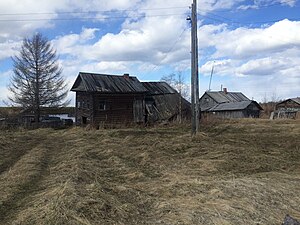Three Kiravs Model: Difference between revisions
mNo edit summary |
m Text replacement - "Aboriginal" to "Urom" |
||
| Line 20: | Line 20: | ||
'''Second Kirav''' - Slower-growing inland cities. Rural lowland areas of coastal states<br> | '''Second Kirav''' - Slower-growing inland cities. Rural lowland areas of coastal states<br> | ||
'''Third Kirav''' - Rural inland Kirav, more populous Highland vales, comparatively prosperous Southern metros, Koskenkorva<br> | '''Third Kirav''' - Rural inland Kirav, more populous Highland vales, comparatively prosperous Southern metros, Koskenkorva<br> | ||
'''Fourth Kirav''' - Remote Highland, boreal, and Deep Inland communities, | '''Fourth Kirav''' - Remote Highland, boreal, and Deep Inland communities, Urom reductions, the rest of the South<br> | ||
<br> | <br> | ||
Mark Lenihan’s future-oriented model based on development prospects rather than present conditions: | Mark Lenihan’s future-oriented model based on development prospects rather than present conditions: | ||
Revision as of 14:06, 1 November 2022
The Three Kiravs Model (Sotrun Kírux Kiravsk) is a common model for conceptualising geographically uneven patterns of economic development in Great Kirav in the post-Kirosocialist era. First formulated by the economist V.E. Sanikoren in [YEAR]. Most variations on the model propose that Great Kirav can be divided into three economic regions:



First Kirav - Growing (mostly coastal) metropolitan areas
Second Kirav - Inland metropolitan areas, generally experiencing slower economic growth or in decline, as well as rural and micropolitan areas of coastal states
Third Kirav - Economically stagnant rural areas of inland states, most of the South, and some especially deprived highland and boreal regions
The model does not extend to Æonara (where development patterns are similar to other advanced nations) or the Overseas. Koskenkorva is sometimes included; the island is classified as part of Third Kirav.
Sanikoren’s original version of the model was based on consumer-side concerns, with a focus on lifestyles and living standards. Sanikoren took variables such as domestic appliance ownership, domestic sanitation, style of dress and penetration of foreign consumer brands (from retail data), and household energy sources, as emblematic of what he termed “these three countries in a single realm” ( kírux kētaktai þūviārkē ).
Other scholars would go on to further develop and modify Sanikoren’s model: Economist D.M. Slædiner expounded on differences in production (a services- and commerce-oriented First Kirav, industrial Second Kirav, and agricultural-extractive Third Kirav). Woman economist Katrin Davoran Tarśigurin proposed a Five Kiravs Model that emphasises qualitative differences between exceptionally prosperous and deprived parts of the country that make them outliers to the classical three Kiravs of Sanikoren’s scheme:
Zeroth Kirav - Coastal major-metropolitan cores
First Kirav - Outer coastal metropolitan areas, growing inland metros, growing smaller cities in coastal and Lake Belt states
Second Kirav - Slower-growing inland cities. Rural lowland areas of coastal states
Third Kirav - Rural inland Kirav, more populous Highland vales, comparatively prosperous Southern metros, Koskenkorva
Fourth Kirav - Remote Highland, boreal, and Deep Inland communities, Urom reductions, the rest of the South
Mark Lenihan’s future-oriented model based on development prospects rather than present conditions:
First Kirav - Robust growth prospectus: Eastern Seaboard, Farravonia, Middle Lakes
Second Kirav - Moderate growth prospectus: Other coastal and lakefront areas
Third Kirav - Marginal growth prospectus: The rest of the lowland North, Midlands, and Southwest
Fourth Kirav - Poor growth prospectus: The South, Western Highlands, and Koskenkorva
Imperial Cola Market Research Regions, illustrating consumer market maturity and integration into global trade networks:
Kirav Zero™ - Imperial Cola market share >70%
Kirav Prime™ - Imperial Cola market share 50-69%
Kirav 2 - Electric Boogaloo - Imperial Cola market share 25-49%
Diet Kirav - Imperial Cola market share <25% or data incomplete because local third-party distributors can’t do math.
The Imperial Cola regions are regarded as a good indicator of how well areas are integrated into the national and global economy, and are of interest because they do not map onto the zonal boundaries of more traditional models very cleanly.